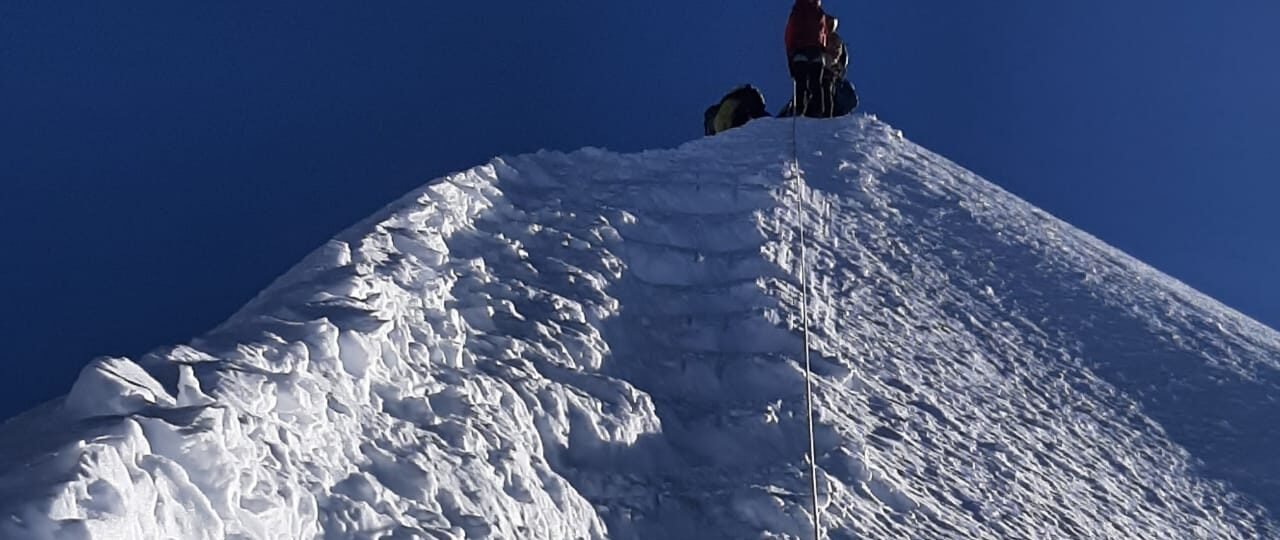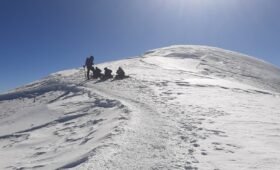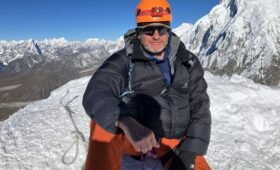As altitude adventurers, climbers, trekkers and mountaineers all know, any journey from sea level to the summit of a mountain is not just a physical ascent, but a physiological journey for the human body too. Here, we will explore the different altitude zone/levels and the effect they have on our bodies, from the busy streets of London City to the unsteady height of Mount Everest.
Low Altitude (0-1500m / 4921ft)
Like: Posing at the Storey Arms Red Telephone Box! (0-440m / 1443ft)

At low altitudes our bodies will function as they have been designed to. The air is rich in oxygen and we can breathe easily without even thinking about it. Whether you are posing at The Red Telephone Box at ‘Storey Arms’ or window shopping on Carnaby Street your body is operating comfortably within its comfort zone.
Our bodies say: Its a typical day.
High Altitude (1500m – 3500m / 4921ft – 11’482ft)
Like: Exploring Mount Athabasca, Canadian Rockies (3491m / 11’453ft) (pic Geoffl)

As you ascend to high altitude you could begin to notice some physiological changes to the normal function of your body. Your breathing rate might increase especially if carrying out physical activity, which goes without saying on an adventure. People could react differently to altitude, some may experience mild symptoms of Acute Mountain Sickness (AMS), such as headaches, fatigue or difficulty sleeping.
Our bodies say: Why am I breathing differently?
Very High Altitude (3500m-5500m / 11’482ft – 18’044ft)
Like: Trekking to Everest Base Camp in Nepal (5364m / 17’598ft)

At very high altitudes the effects on your body will become much more noticeable. The air is significantly thinner, to get the oxygen your body needs it must work harder. At severe altitude illness becomes more common, you may well experience nausea & vomiting, sleep deprivation, malaise and a drop in performance.
Our bodies say: This is hard graft!
Extreme Altitude (5500m – 8848m / 18’044ft – 29’028ft)
Like: Trekking Mount Kilimanjaro in Tanzania (5895m / 19’341ft)

At extremely high altitudes, the human body reaches a point where prolonged survival becomes unfeasible. The insufficient oxygen starts to severely impact the body, leading to a significant risk of developing severe conditions such as High Altitude Pulmonary Edema (HAPE) or High Altitude Cerebral Edema (HACE). HAPE is due to fluid building up in the lungs, you may feel very weak, breathless (even at rest), cyanosis, a fast pulse. HACE is due to swelling of the brain, you may feel unsteady, drowsy, confused, irrational, physically sick, suffer severe headaches.
Both of these conditions are an emergency and can quickly result in death, descending to a lower altitude must be carried out immediately.
Our bodies say: There is no way I can stay here very long.
“The Death Zone” (over 8000m / over 26’246ft)
Like: Summiting an 8000er such as Mount Everest in Nepal (8848m / 29’028ft)

It is not named the “Death Zone” for nothing, beginning at approximately 8000 metres the air at this altitude contains only about one third of the oxygen found at sea level. Every breath you take is a struggle, and the body begins to deteriorate rapidly, effectively ‘dying’. Even with the use of ‘supplemental oxygen’ (oxygen cylinder & face mask), climbers can only spend a very limited time at these altitudes, stay longer at your peril!
Our bodies say: I’m dying, get me the f@@@ out of here!!
Understanding the Altitude

Whether you’re gearing up for your first high-altitude trek or you’re an experienced mountaineer seeking to deepen your knowledge, familiarising yourself with these altitude zones is the crucial first step toward ensuring safer and more rewarding mountain adventures.
Understanding how your body responds to various altitudes is essential for anyone embarking on high-altitude adventures. This knowledge is key to preparing both mentally and physically, and highlights the importance of proper acclimatisation.
Always pay attention to how your body feels, climb slowly, and don’t hesitate to descend if you experience severe altitude sickness symptoms. The mountains are not going anywhere and will still be standing there waiting for your next adventure!
Enjoy!




